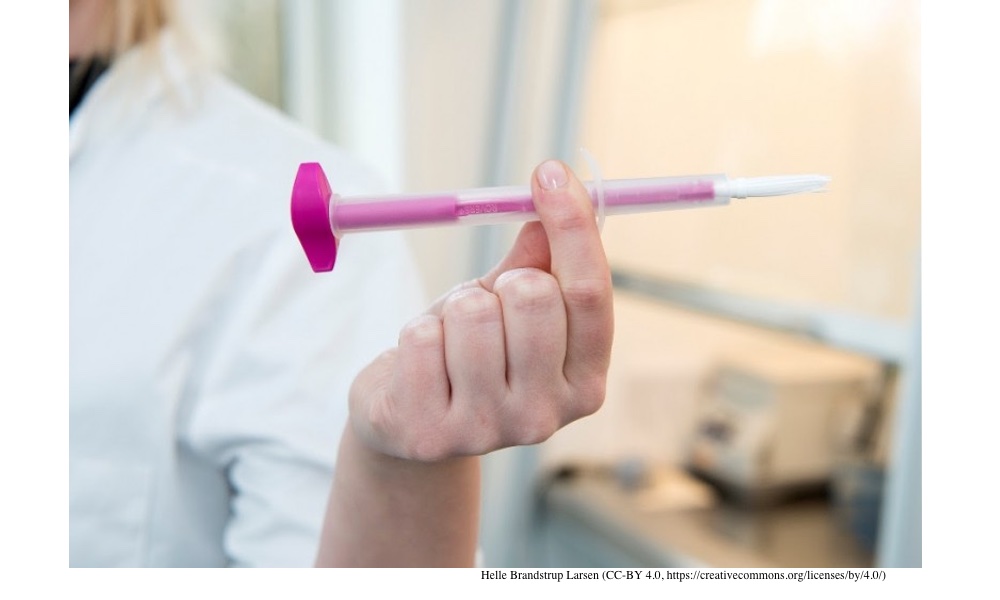You may think that a woman older than sixty-five years wouldn’t need a one-time "high risk" human papillomavirus (HPV) test, but this may not be true. Even though current screening guidelines recommend discontinuing screening for women 65 or older who have had a history of normal Pap and/or HPV tests, older women can still benefit from this test because it screens not only for the HP virus, but also for cervical cancer cells, a new Danish study finds.
HPV is the most common sexually transmitted infection (STI). One symptom is warts on the genital area., but many people with HPV don’t know they have the infection because they don’t develop symptoms.
Whether there are symptoms or not, the virus can be passed along to others through sexual contact — and it can cause cervical cancer. That’s why, at any age, it’s important to know whether you have HPV.
In recent years something called a “high risk test” has been developed that detects HPV at its earliest stages — even earlier than the standard method of looking for cervical cancer lesions with pap smears. The high-risk HPV test hasn’t been around long; so most women 65 and older have not had one, leaving them open to developing undiagnosed cervical cancer until it’s in an advanced stage.It can take years before HPV abnormalities advance into full-blown cervical cancer — if they ever do. At the same time, nearly one in five cervical cancers diagnosed from 2009 to 2018 were in women 65 years or older.
“It may be valuable to get women above the current screening age to get this one-time catch-up HPV test if they haven’t had one before,” Mette Tranberg, a cancer epidemiologist and researcher at Randers Regional Hospital in Denmark and lead author of the study, said in a press statement.
In the U.S. cervical cancer is most often diagnosed in women aged 35-44, according to the American Cancer Society. The cancer rarely occurs in women who have had regular pap smears or with a one-time high risk HPV test. But Tranberg pointed out that as they get closer to sixty-five years, many women do not continue to get these tests. That may be one reason why the average age of diagnosis in the U.S. is 50 years, which suggests that a good number of older women are being diagnosed with the disease.
To find out whether taking the HPV test would be useful in preventing cervical cancer in this older population, the Danish researchers asked women aged 65 to 69 years to take the “catch-up” high-risk HPV test to see if it would help them avoid developing advanced cases of undiagnosed cervical cancer. They also used data on 33,000 women who did not screen for HPV as a control group.
Over 11,000 Danish women in the study took either:
- The high-risk HPV test in their doctor’s office where a speculum is inserted into the cervix, and tissue is swabbed to be analyzed. Or …
- Used a version of a take-home test which is less invasive.
The research team found out that in the screening group there were 3.9 cases per 1,000 women where precancerous tissue was identified. In contrast, only 0.3 cases were identified in the control group who did not take the high-risk HPV test. This means that in some cases, pre-cancerous abnormal tissue went undetected in women who were not screened. That said, it can take years before HPV abnormalities advance into full-blown cervical cancer — if they ever do.
Tranberg took this into consideration when explaining the study’s results: “It is true that not all detected precancerous cervical lesions would have progressed into cancer in a woman’s remaining life span,” she said. “Therefore, the detection and treatment of these precancer lesions could be considered as overtreatment.”Whether there are symptoms or not, the virus can be passed along to others through sexual contact — and it can cause cervical cancer. That’s why, at any age, it’s important to know whether you have HPV.
But since another recent study showed that nearly one in five cervical cancers diagnosed from 2009 to 2018 were in women 65 years or older, if you’re in this age group, it’s probably a good idea to speak with your healthcare provider about the value of taking the one-time high-risk HPV test.
The study is published in PLoS Medicine.





